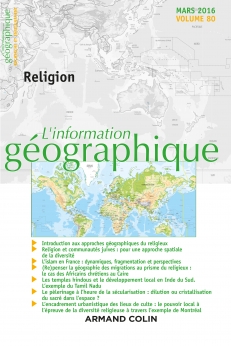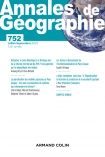
L'information géographique - Vol. 80 (1/2016)
Pour acheter ce numéro, contactez-nous
Recevez les numéros de l'année en cours et accédez à l'intégralité des articles en ligne.
À partir de l’exemple du monde juif, on donne ici quelques éléments de réflexion sur l’usage et la pertinence de la notion de communauté, et sur l’intérêt de la dimension spatiale pour analyser le fait communautaire liée à la religion. En se démarquant des visions essentialisantes qui considèrent les communautés comme des groupes homogènes et fermés, on souligne le contraste entre la représentation très courante de l’existence d’ « une » communauté juive unie et uniforme, et la réalité de la diversité interne au monde juif. Il s’agit moins de poser des frontières autour d’une communauté que de comprendre la dimension spatiale dans la construction de communautés plurielles.
The focus of this paper is to bring elements of reflection regarding the use and the relevance of the notion of community, by taking the example of the Jewish world. It highlights the interest of the spatial dimension for the analysis of the relations between religion and community. In opposition to the essentializing visions of communities that consider them as homogeneous and closed, we underline the contrast between the widespread representation of a unified and uniform Jewish community, and the internal diversity of the Jewish world. It is not so much drawing community boundaries, rather than understanding the spatial dimension of the construction of plural communities.

